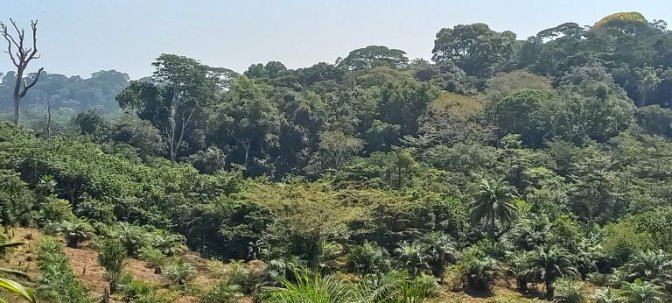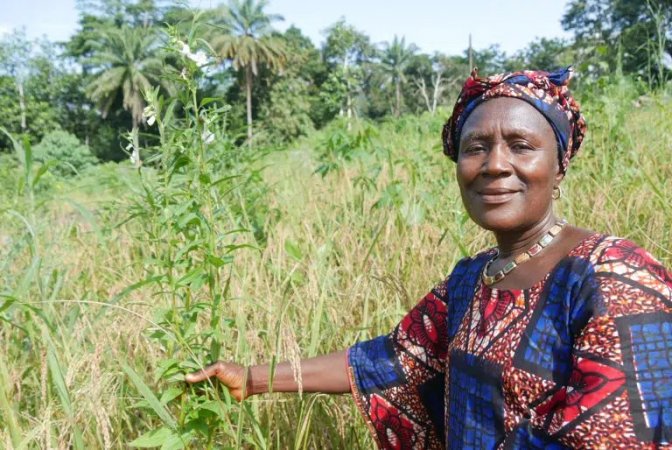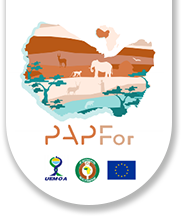Home / News / Protecting the Gola Rainforest in Sierra Leone through Community Engagement (...)
Protecting the Gola Rainforest in Sierra Leone through Community Engagement and Awareness Raising
The EU-funded Programme for the Preservation of Forest Ecosystems in West Africa (PAPFor) is tackling forest degradation in the Gola Rainforest National Park (GRNP) landscape, in southeast Sierra Leone, by working with rural communities to create awareness about the importance of forest protection and sustainable livelihood options.

In 2020, when the Conservation Society of Sierra Leone (CSSL) presented the PAPFor project to Gaura chiefdom, Madam Katta Sannoh, a 58-year-old farmer from Joru town, was among the many participants who were invited to one of the project’s first meetings. Madam Sannoh used to accompany her husband (a hunter) to set snares to catch wild animals for meat while practising slash-and-burn farming in the community forest. They caught different wildlife including porcupines, monkeys and duikers on a daily basis and traded them to support their children in school.
Three years later, Madam Sannoh is the current Chairlady of the Gola Community Development Committee (GCDC), which was set up by the Gola Rainforest Company Limited By Guarantee (GRC-LG). The GCDC has oversight on all the forest-edge communities in the Gola Landscape to foster equal and active participation of members in discussions and arrangements related to community development and forest conservation.
Madam Sannoh acknowledges having been affected by what the project staff told the community about the need to protect their forest from all kinds of harmful practices. “I was the first person to openly talk to my husband for us to stop setting snares and farming in the Gaya-yayei forest. We gave our forest the name ‘Gaya-yayei’, to mean ‘the Crying Hill’, because there was always enough water for all the communities around it to sustain themselves with. But at that meeting, we realised we were responsible for the acute water shortage that we were experiencing even in the rainy season. Since then, my husband stopped setting snares, and I relocated my farming activities to another area close to the community,” Madam Sannoh recounts.
In addressing perennial problems such as deforestation and illegal wildlife hunting and trading, CSSL reached out to engage with communities, produced radio programmes for community radio stations, and trained community and traditional leaders as educators to influence the behaviour of community members and raise awareness and knowledge regarding conservation best practices. Furthermore, by working with the Ministry of the Environment and GRCLG, they arranged to set up and run seven Community Forests and exercises in Land Use Planning and Mapping in the entire GRNP landscape.

The Gaya-yayei Community Forest is a perfect example of a forest that communities should rely on for the provision of ecosystem services. In addition to non-timber forest products including herbal medicines, rattan, and many others, the township of Joru and five other communities currently benefit from uninterrupted pipe-borne water sourced from the Gaya-yayei Community Forest through a gravity system. Since it began, the project has had a significant impact on about 34 704 local people across the six communities around the community forest in Gaura chiefdom.
“The PAPFor project has highlighted the impact that can be realised with the active participation of local communities to conserve forest resources,” notes Anthony Agbor, Africa Forest Coordinator at BirdLife International.

